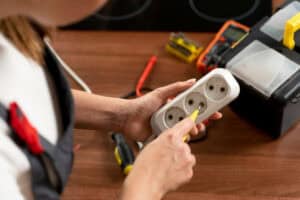News
What Are the Advantages of CNC Machining Compared to Conventional Machining?

CNC (Computer Numerical Control) machining has become one of the most prevalent technologies in modern manufacturing. While conventional machining has been used for decades, CNC offers numerous advantages in terms of precision, efficiency, and flexibility. In this article, we will examine the key benefits of CNC machining compared to traditional methods and explain how this technology revolutionizes manufacturing across various industries.
Precision and Accuracy
One of the primary advantages of CNC machining over conventional methods is the level of precision it offers. CNC machines are programmed by computers to follow precise commands, ensuring that each part produced is consistent and accurate, even when manufacturing complex geometries.
- CNC Machining: Achieves high accuracy with tolerances as low as a few microns, making it ideal for industries requiring precision, such as aerospace and medical device manufacturing.
- Conventional Machining: Relies on manual operation, making it more prone to human error and variations between parts. Maintaining tight tolerances over long production runs can be challenging.
The use of computerized programming ensures that every part produced by CNC machining is consistent, minimizing waste and reducing the likelihood of errors.
Efficiency and Speed
CNC machining is known for its efficiency and speed, particularly in high-volume production settings. This is due to several factors:
- Automated Operation: CNC machines can operate continuously, often 24/7, with minimal human intervention. Once a program is set up, the machine can execute the same operation repeatedly without stopping.
- Faster Setup Times: CNC machines use digital programs, which reduce setup time significantly compared to conventional machines that require manual adjustments.
- Multi-Axis Capabilities: CNC machines can operate on multiple axes simultaneously, allowing for the production of more complex parts in a single operation, reducing the need for multiple setups.
In contrast, conventional machining requires more time for setup, manual tool changes, and adjustments, making it less efficient for large-scale production.
Consistency and Reproducibility
CNC machining ensures a high degree of consistency in the production process. Once the machine is programmed with the desired specifications, it can reproduce identical parts with minimal deviation.
- CNC Machining: Offers consistent quality across all parts, regardless of the production volume. The ability to replicate the same product repeatedly with minimal variation is crucial in industries where uniformity is essential.
- Conventional Machining: As it involves manual operations, there is a higher chance of inconsistencies between parts, especially in long production runs.
This reproducibility makes CNC machining particularly valuable in sectors like automotive and electronics, where thousands or millions of identical components are required.
Flexibility and Versatility
CNC machining is highly flexible, allowing manufacturers to switch between different designs quickly and efficiently. With the use of CAD (Computer-Aided Design) software, operators can create or modify designs and upload them to the machine, enabling rapid adjustments.
- CNC Machining: Can easily accommodate complex shapes, multiple dimensions, and intricate details. Additionally, CNC machines can work with a wide range of materials, including metals, plastics, and composites.
- Conventional Machining: Requires more manual intervention for design changes, and producing complex shapes may require multiple machines or steps.
This versatility allows CNC machines to be used in a wide variety of industries and applications, from prototyping to mass production.
Reduced Labor Costs
CNC machining significantly reduces the need for manual labor, leading to cost savings in production. Since CNC machines are automated, they can run with minimal supervision, often requiring only a single operator to oversee multiple machines.
- CNC Machining: Operators only need to manage the initial setup, loading of raw materials, and occasional maintenance. This reduces the demand for skilled labor, which can be expensive and hard to find in certain regions.
- Conventional Machining: Requires skilled operators to perform each machining task manually, increasing labor costs and the likelihood of human error.
The reduction in labor-intensive processes makes CNC machining a cost-effective solution for both small and large-scale manufacturing.
Enhanced Safety
CNC machining is generally safer for operators compared to conventional machining. Since most of the operations are automated, the risk of injury is greatly reduced.
- CNC Machining: Operators do not need to be physically present near the cutting tools or materials during the machining process, which minimizes the risk of accidents.
- Conventional Machining: Involves manual operation of machinery, which can expose workers to potential hazards, such as flying debris, sharp tools, or moving parts.
In addition to improving safety for workers, CNC machines are also equipped with sensors and alarms to detect malfunctions, further enhancing operational safety.
Scalability for Production
CNC machining excels in scalability, making it ideal for both small and large production runs. The same CNC machine can be used to produce one part or thousands of parts with minimal adjustments.
- CNC Machining: Once the design is programmed, scaling up production requires minimal effort, allowing manufacturers to meet increasing demand quickly. This flexibility makes CNC machining well-suited for industries like consumer electronics and automotive.
- Conventional Machining: Scaling production in conventional machining can be time-consuming and labor-intensive, as it may require additional setups and operator intervention.
The scalability of CNC machining offers manufacturers the ability to increase production without compromising on quality or efficiency.
Complex and Intricate Designs
Another advantage of CNC machining is its ability to handle complex and intricate designs that would be difficult or impossible to achieve with conventional machining methods.
- CNC Machining: Multi-axis machines allow for the production of complex shapes with minimal effort. Designs with curves, cavities, and intricate features can be easily created using CNC programming.
- Conventional Machining: Requires multiple tools, steps, and setups to produce complex designs, which increases production time and costs.
CNC technology enables manufacturers to push the boundaries of design, allowing for innovation and the creation of more sophisticated products.
Conclusion
CNC machining offers numerous advantages over conventional machining, including higher precision, faster production speeds, improved consistency, and reduced labor costs. Its ability to handle complex designs, ensure safety, and scale production makes it an essential technology in today’s manufacturing landscape. As industries continue to evolve and demand higher-quality, more efficient production methods, CNC machining remains a key player in driving innovation and improving manufacturing processes.
More News Articles


